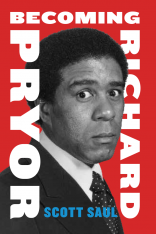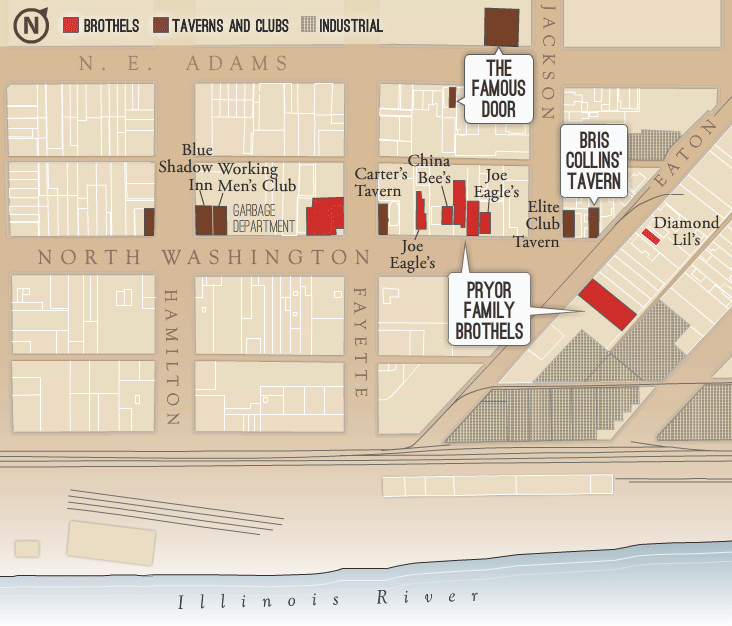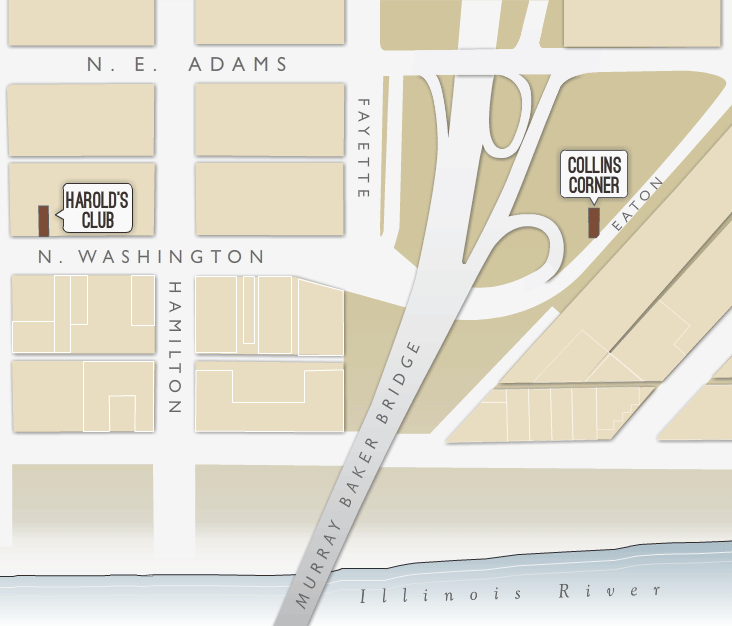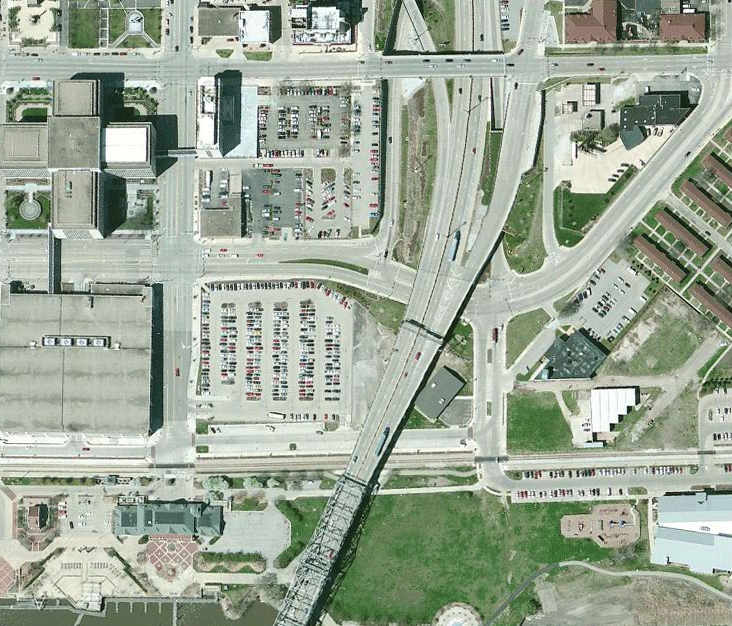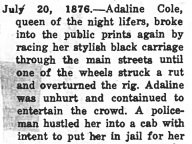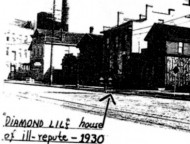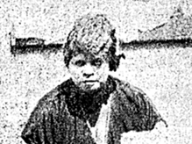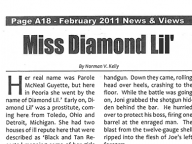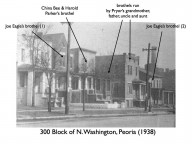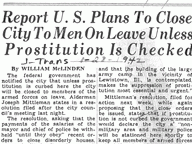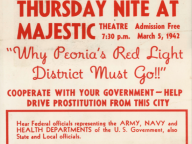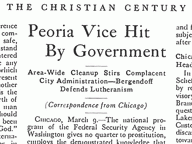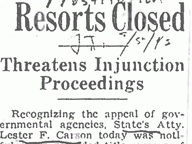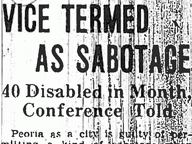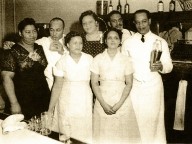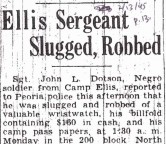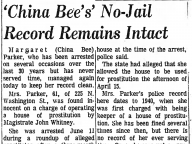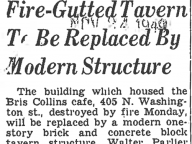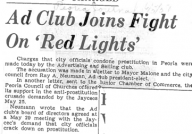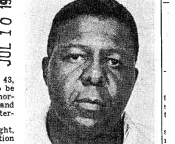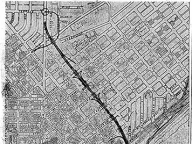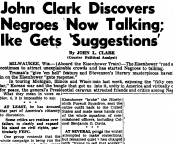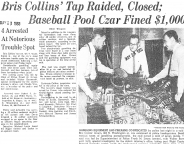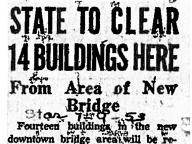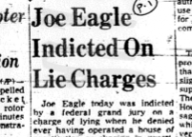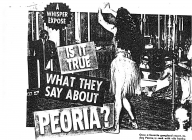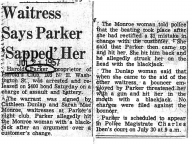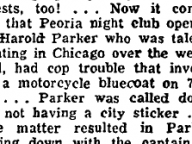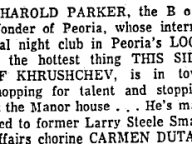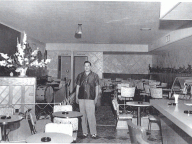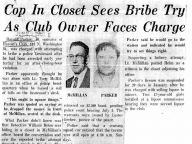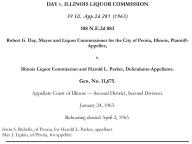Top: N. Washington St. in the '30s and 40s Bottom-left: 1958-1962 Bottom-right: 2012
North Washington Street
The 300 block of North Washington Street, the setting of Richard Pryor’s childhood, appears in photos to be utterly nondescript: a street of modest houses with open porches. But it was the thriving center of Peoria’s interracial red-light district, where the basic businesses were brothels and taverns, with customers shuttling between the two sorts of establishments. In the 1930s and early-1940s, the North Washington area benefited from the protection of City Hall, and offered a foothold to underground entrepreneurs like Richard’s grandmother Marie Pryor. With World War Two, however, North Washington Street became a flashpoint for a reform movement that sought to wipe the red-light district off the map.
A Night on the Town
What was it like to walk down the streets of Richard’s first neighborhood? That depended on the time of day. During the morning and early afternoon, grocers ran a busy trade in wholesale fruit and vegetables — fresh produce that may have just been unloaded from the nearby train station or dockyards.
At night, men who worked at Hiram Walker and Caterpillar, or who were posted at nearby Camp Ellis during World War Two, wandered to North Washington Street with money to spend. If they wanted to shoot pool, there was the Working Men’s Club. If they wanted just a drink, there was the Blue Shadow Inn, the Elite Club or Bris Collins’s tavern. Or if they were looking for female companionship, they needed only to walk down the 300 block of North Washington and sample the wares: women waving or rapping on the panes of windows, or sometimes blowing kisses at passersby. The block was open all night long for business. Up until three or four in the morning, the black street vendor Hot Toe could be heard pacing up and down the street, selling hot tamales fresh from his cart.
The Pryor family brothels occupied two neighboring houses on the 300 block of North Washington, and were surrounded by brothels run by the well-known madam “China Bee” Parker and the Italian-American Joe Eagle. Collectively, this cluster of brothels offered “something for everyone.” China Bee ran the block’s most popular house, whose Chinese lanterns cast a soft glow on its operations. Joe Eagle ran the only house with a largely white stable of working girls, and could charge higher tariffs from his whiter clientele.
Around North Washington Street, taboos on interracial relations were provisionally relaxed. In nightspots like the Famous Door or, later, Harold’s Club, blacks and whites could fraternize, away from prying eyes. At the same time, much of the interracial “fraternizing” was made possible by cash on the table, and need not be romanticized.
A Loophole in a Segregated City
North Washington Street offered a loophole in largely segregated mid-century Peoria, an area of some opportunity and freedom for black men and women. For the black women who worked there, the red-light district represented an alternative to domestic work, and in a few cases, provided for a measure of success unthinkable in other contexts.
In fact, audacious women had a history of running the businesses of North Washington Street. From the 1870s through the turn of the century, Adaline Cole richly prospered as the “colored queen of Peoria’s half world”: Cole enjoyed the spectacle of her wealth, often riding through the streets of Peoria in an elegant black carriage drawn by a sleek team of black horses. In the 1920s, the legendary madam Diamond Lil presided over The Oasis, a thriving resort with a black and white clientele. Starting in the mid-1930s, Marie Pryor followed in the path marked out by these women.
Running a brothel was often a stepping stone to running other more legitimate enterprises. Marie Pryor began by managing brothels, but later operated the Pryor family tavern The Famous Door, a beauty shop, and a small restaurant out of her home. Likewise, Harold Parker began by working with his wife China Bee, but later created, in Harold’s Club, one of the most stylish nightspots in the Midwest.
Far from being merely a marginalized underworld, the red light district was integrated into the political and social life of the city. Up through the 1940s, a system of payoffs ensured that police were generally kept at bay, and the entrepreneurs of North Washington Street carried weight in the community. When elections approached, Richard Pryor remembered, “all the political people would come to the whorehouse to try to win votes.”
The Swing of the Wrecking Ball
During World War II, as the federal government worried about the “social diseases” spread by Peoria’s brothels, North Washington Street became a flashpoint for middle-class reformers. The campaign against vice in the red-light district achieved a roundabout victory with the approval of a plan to build a new bridge linking Peoria and East Peoria: the 300 block, the black-oriented portion of the red light district, was at the very center of the new construction project. The city block the Pryors called home was targeted for demolition.
For the underground entrepreneurs of 300 North Washington Street, the construction of the Murray M. Baker Bridge was their public eviction. Around the end of 1951, Marie and her family left behind her brothels at 313 and 317 North Washington Street, a few steps ahead of the wrecking ball. The Famous Door had already closed a few years before.
In the early-1960s, after he came back from a stint in the Army, Richard Pryor began his career as a comic by returning to the edges of North Washington Street. His first two paying gigs were at Harold’s Club and Collins Corner — clubs run by two of Richard’s neighbors from his early childhood, who had managed to survive the demolition plan and hang on in the area.
Currently, the central blocks of Richard’s childhood neighborhood are occupied by the international headquarters of Caterpillar, Inc.
“In my neighborhood whatever you were was cool. You could be a thief, murderer, or closet queen.”
— Richard Pryor
